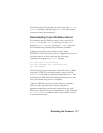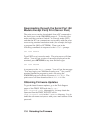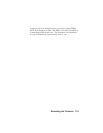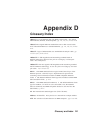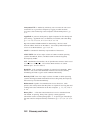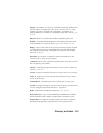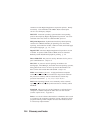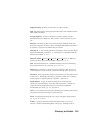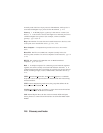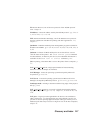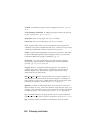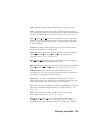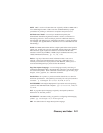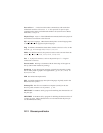
Glossary and Index D-5
Duplex Printing Printing on both sides of a sheet of paper.
EIO The internal bus used by the latest HP printers like the HP LaserJet
4000, 5000, and 8000.
Escape Sequence A series of characters, usually starting with the
ESCAPE character (ASCII 27), that is used to control a printer or print
job.
Ethernet The most popular Local Area Network standard, which was
developed originally by Xerox, Intel, and Digital Equipment Corporation.
It operates at a speed of 10 million bits per second.
Ethernet II 1. The second generation of Ethernet, which was developed
before the IEEE 802.3 standard. 2. A frame that is compatible with the
Ethernet II standard. p. A-11.
Ethernet_SNAP Ethernet Sub-Network Access Protocol, an Ethernet
frame type that is derived from the 802.2 standard. p. A-11.
FTP File Transfer Protocol, a TCP/IP-related protocol for transferring
files between devices on a network. pp. C-8 to C-9.
File Server A device on a local area network that provides services to
client computers on the network, such as file sharing, print services, etc.
Firmware The program that operates a microprocessor-based device like
a print server. Essentially the same as software, but the term "software"
usually applies to general-purpose computers. Appendix C.
Flash Memory A type of memory which allows read and write
operations, but permanently stores data when the power is turned off.
Useful for storing firmware, because it can be easily updated by
downloading new code. pp. 1-2, Appendix C.
Font A set of characters (usually the alphabet plus numbers punctuation,
and special characters) that have a particular style.
Form A template describing the way a page will appear when printed.
pp. 11-4 to 11-5, 14-22.
Frame A group of data and control information that is sent over a
network. Often used interchangeably with packet, although frame is



